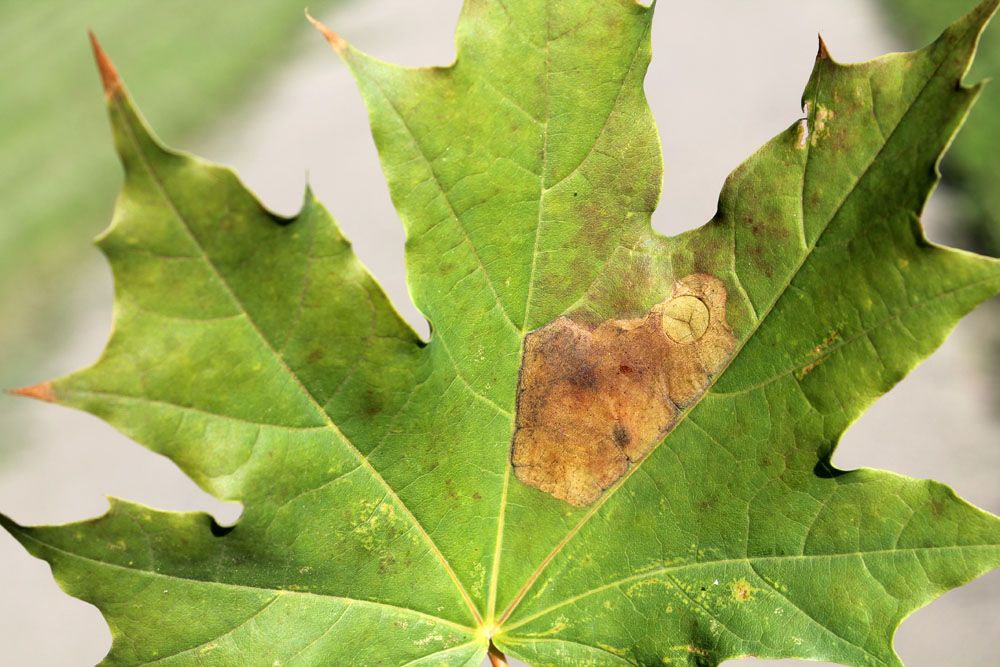
Maple Leafminer – Phyllonorcter aceriella
Maple Leaf Miner: Appearance, Territory, Damage and Life Cycle
Latin Name: Phyllonorycter Aceriella
Appearance: The face is silvery white, with orange and silvery scales on the tuft (general appearance is whitish). The thorax is a bright reddish orange color. The forewings are reddish orange, with two noticeable straight or nearly straight fasciae on the posterior edge that are white with black borders. The two fasciae are oblique, with one towards the center of the wing and the other halfway between it and the wing’s base. Above the cilia, a whitish dorsal stripe with a black border on the posterior margin curls towards the apex. The hindwings are plumbeous, with fulvous-colored cilia.
Hosts Plants: Maple Trees
Territory: Eastern Canada
Damage Insect Cause: Damage to leaf surfaces is adequate proof of the existence of the maple leafminer. The larvae burrow into the parenchyma, right beneath the leaf’s top surface. The damage becomes more visible at the end of summer when caterpillars wrap silk over a portion of their mines in order to pupate the next spring. A portion of the population overwinters as larvae inside fallen leaves before pupating the following spring. The other half spends the winter as pupae.
Life History and Habits: The larvae create long, flat, and somewhat broad upper-surface mines with one or more small lobes that branch off the main channel. Larvae deposit frass pellets along the mine’s edges. The summer brood pupates in a silk-lined chamber. Larvae brood in the fall and overwinter within a circular nidus, where they pupate the following spring.
